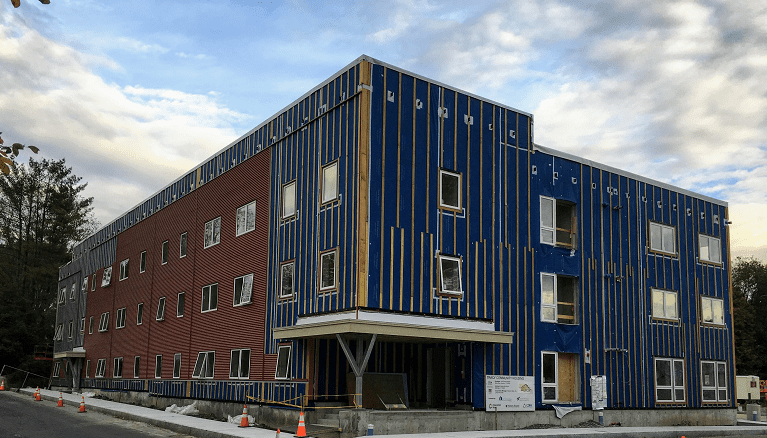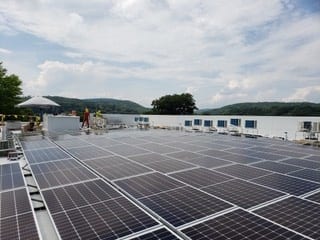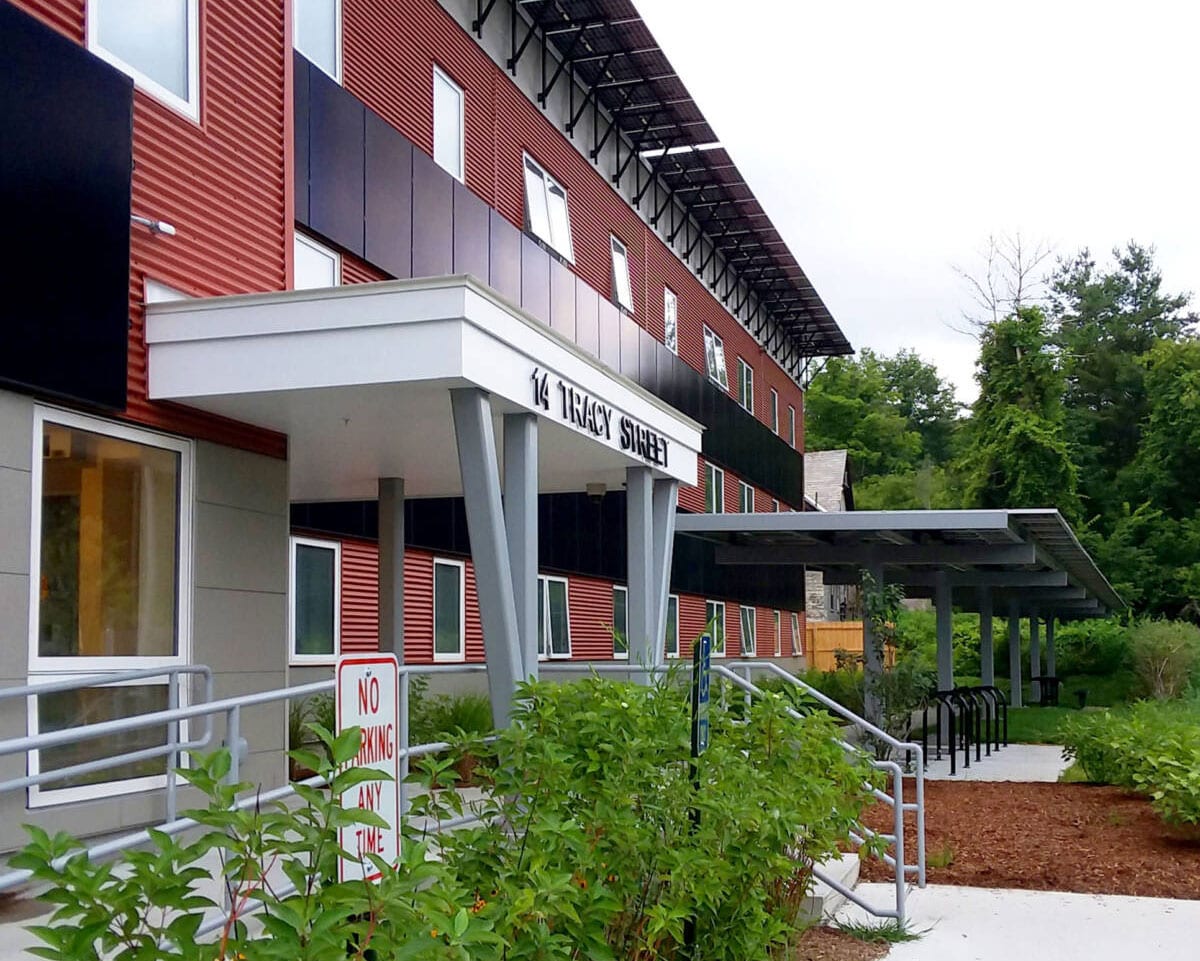PROJECT SUMMARY
Tracy Community Housing is the first Net-Zero multi-family building of any significant size in all of northern New England, measuring 29,000 square feet. It is also Passive House Institute US certified and is a 2020 PHIUS Design Competition Winner.
Tracy Community Housing’s twenty-nine units are restricted to households earning up to 60% of the Area Median Income. In Grafton County, where Tracy Community Housing is located, this equates to a single individual making roughly $37K a year or a family of four making no more than about $53K annually.
Twin Pines Housing Executive Director Andrew Winter says that, in addition to providing an affordable housing option, Tracy Community Housing will help “reinforce the residential nature of Tracy Street and improve the overall quality of the housing stock in the neighborhood.”
Although Tracy Community Housing is not the first multi-family building on Tracy Street, its infrastructure and design are one-of-a-kind. Designed by energy-efficient design leader and author Bill Maclay and Teal Usher of Maclay Architects and project managed by Tim Estes and Jason Spaulding of Estes & Gallup, Tracy Community Housing reaches Net-Zero through a combination of impeccable insulation and extensive and creative use of solar paneling by Norwich Solar.
CHALLENGES ADDRESSED
In order to ensure maximum coverage, Norwich Solar installed solar panels on four different surfaces including the roof and cornice of Tracy Community Housing as well as on the wall of the building’s south side façade. To complete the array, Norwich Solar built a freestanding solar arbor, providing residents with a shaded area to park bicycles or relax at a picnic table. The yield of this solar array will cover all the energy needs of the building, including heating and cooling, thanks to a series of Air Source Heat Pumps.
ABOUT TWIN PINES HOUSING TRUST
Twin Pines Housing was formed in 1990 through the merger of two housing organizations having similar visions: to develop and provide affordable housing for low- and moderate-income families in the Upper Valley.
PRODUCTION STATISTICS
- Anticipated Production: 193,000 kWh per year
ENVIRONMENTAL BENEFITS / OFFSET EQUIVALENTS*
- 683 tons of CO2
- 15,000 trees planted
- Year 1 Value of Energy $22,740
(*estimates based on 50K lbs. carbon offset/ 579 trees planted and 52,000 miles driven per kW over system life)
SYSTEM SPECIFICATIONS
- System Capacity: 185 kW-DC/123 kW-AC
- Type of System: Ballasted Roof & Wall Mounted + Solar Canopy
- Date of Commissioning: November 2019
- Location: West Lebanon, NH







